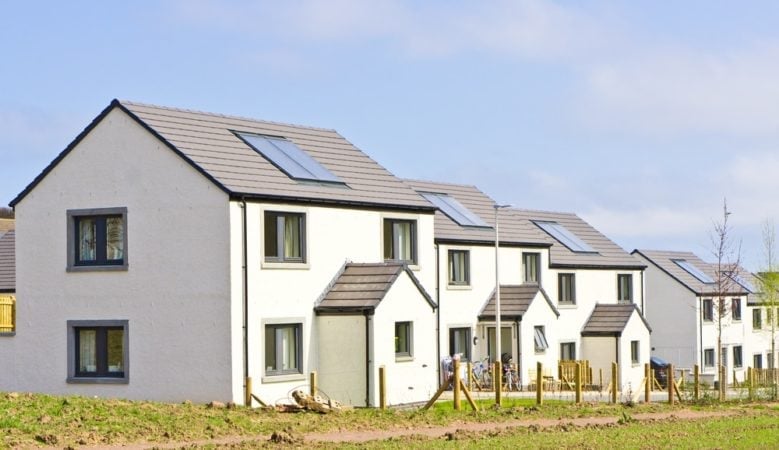Number of new homes provided annually in England exceeds 200,000 for the first time in a decade

Over 200,000 new homes were provided in England last year compared with the previous year, according to official figures, but some councils are still not meeting the challenge of providing enough housing.
The data from the Department of Communities and Local Government (DCLG) is published on the same day a Prime Minister Theresa May pledged to personally oversee an increase in new home building.
Overall 217,350 new homes were created in 2016/2017, a rise of 15%, of which 183,570 were new builds, 37,190 were from a change of use from commercial to residential, 5,680 from conversions between houses and flats and 720 other gains.
It means that 1.1 million new homes have been built since 2010 and the annual number has exceeded 200,000 for the first time in a decade. But there is still some way to go to reach the 250,000 new homes a year that are needed.
Communities Secretary Sajid Javid welcomed the figures and but he also criticised councils for not doing enough. He revealed that he will be taking action against 15 local authorities that have failed to produce a local plan setting how and where they expect to meet their residents’ needs for new homes.
‘Steps have been made in the right direction but I want to see a giant leap, and hundreds of thousands more homes. We owe it to our future generations to fix this broken housing market and help them find a home of their own,’ said Javid.
‘Whilst some councils are recognising their responsibilities and stepping up to meet the housing challenge, too many are still not acting. That’s why I’m stepping in now to make sure they act,’ he added.
He explained that in 2004 the existing procedure for councils to draw up a local plan, setting how and where they expect to meet their residents’ needs for new homes was introduced but the latest figures show that more than 70 local authorities still have not had a local plan adopted and 15 of these are showing particular cause for concern having missed deadlines and failed to make progress.
‘These 15 local authorities have now been served notice that government has begun the formal process of intervention as set out in the Housing White Paper. Without a local plan in place it can mean uncertainty for local people and piecemeal speculative housing development. It can also mean the right investment in local infrastructure isn’t made,’ Javid pointed out.
Reaction to the new homes figures has been positive. Blane Perrotton, managing director of the national surveyors Naismiths, believes that it is good news that house building is not far from its pre-recession peak.
He also pointed out that while new build properties continue to account for the biggest share of new homes, it’s noteworthy that the role the conversion of existing buildings to residential use is increasing and up 36% on the previous year.
‘On the frontline we’re seeing a spike in the number of developers seeking to convert office buildings into residential units under the extended and popular Permitted Development Rights,’ he added.
Nathan Ellis-Calcott, director of specialist development finance broker Thistle Finance, also welcomed the increase of conversions under PDR. ‘With the shortage of land available to develop, recycling vacant office space into residential homes will be crucial in helping to solve the housing crisis,’ he said.
He also pointed out that one of the main reasons for the growth in new homes is the improved availability of finance for developers. There has been an influx of new lenders and challenger banks into the development sector over the past two to three years. This has brought rates down and offered greater choice to developers, both large and small,’ he explained.
‘While some banks will only lend to established developers, a growing number of lenders are accommodating first time developers, or those with less of a track record. Yes, the rates will be higher but the finance is at least available. We have a long way to go in solving the entrenched housing crisis but for now the borrowing environment for developers is fairly healthy,’ he added.
Anthony Rushworth, founder of house building investment platform Homegrown, hopes that more will be done to help smaller developers boost their contribution to new home building.
‘One of the telling structural problems we see in England is that smaller developers struggle to raise the funds to build new homes even when house prices are in rude health. We already have fewer smaller developers than we did a decade ago as many went out of business after the crash,’ he said.
‘In many areas where demand is high, land values are high and land is in short supply, these smaller developers are incredibly valuable. We need to ensure, whatever comes down the line, that they are able to continue building, rather than periodically having to dance to the tune of relatively short term ructions in the fortunes of house prices,’ he added.




